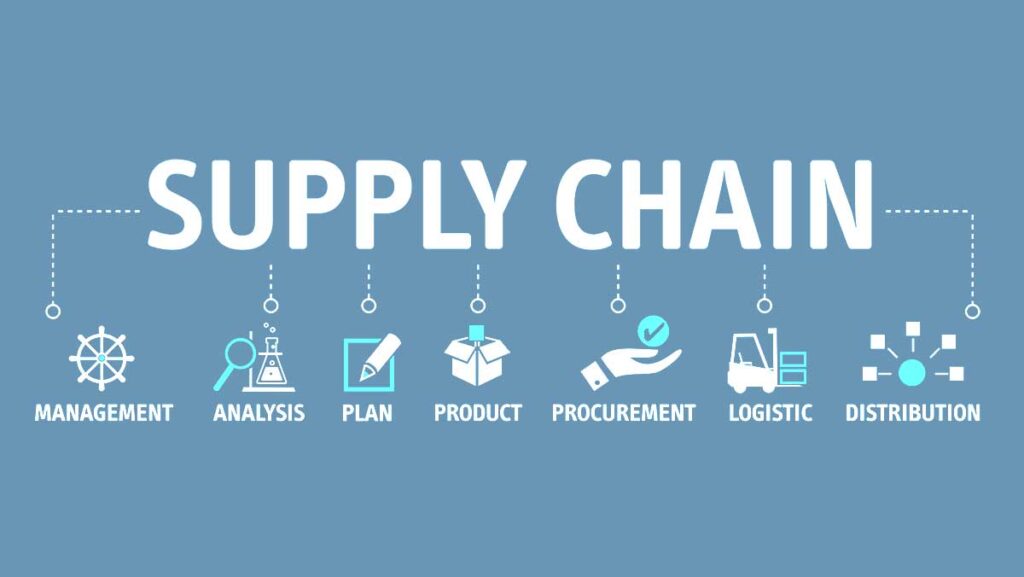

In today’s interconnected world, supply chains are increasingly complex, spanning multiple countries and involving various stakeholders. The global economy has created opportunities for cost savings, efficiency, and growth, but it has also introduced new supply chain challenges. Disruptions like economic instability, regulatory changes, and unexpected events such as pandemics and natural disasters reveal vulnerabilities in global supply chains. This article explores the key challenges faced in supply chain management and offers strategies to address them.
Key Supply Chain Challenges in a Global Economy
As supply chains grow more intricate, several issues have emerged that companies must navigate to ensure smooth operations.
1. Demand Fluctuations and Forecasting
One of the most pressing challenges in supply chain management is accurately forecasting demand. Sudden shifts in consumer behavior or unexpected market trends can lead to stock shortages or excess inventory, affecting revenue and customer satisfaction.
2. Supplier Reliability and Global Sourcing
Reliance on suppliers from different regions introduces risks due to variability in production standards, quality control, and reliability. Disruptions in one part of the supply chain can have ripple effects, delaying production and delivery.
3. Transportation and Logistics Bottlenecks
Global supply chains rely heavily on transportation networks, and any disruption—such as port congestion, fuel price spikes, or labor shortages—can cause delays and increase costs. Managing logistics efficiently across borders is essential but often complicated by customs regulations and geopolitical tensions.
4. Compliance and Regulatory Challenges
Operating across different countries means navigating a range of regulatory frameworks. Compliance with local labor laws, environmental standards, and trade restrictions can be challenging, requiring continuous monitoring and adjustments.
5. Environmental and Sustainability Concerns
There is growing pressure on companies to adopt sustainable practices. Supply chains are responsible for a significant portion of a company’s environmental footprint, and addressing sustainability has become essential for brand reputation and regulatory compliance.
Strategies to Solve Supply Chain Challenges
To overcome these challenges, businesses can adopt specific strategies that enhance resilience, efficiency, and adaptability in their supply chains.
1. Invest in Advanced Forecasting and Data Analytics
Implementing data analytics and forecasting tools can improve accuracy in demand planning. Machine learning and AI-powered tools analyze historical data, market trends, and external factors to provide accurate demand forecasts. These insights allow companies to adjust inventory levels and production schedules proactively, reducing the risk of shortages or excess stock.
2. Diversify Supplier Networks
Relying on a single supplier or region can increase risk, as disruptions can halt production. By diversifying their supplier base across multiple countries or regions, companies can reduce dependency on any one source. This strategy also provides flexibility in case of geopolitical or economic challenges affecting a specific location.
Key Benefits:
- Risk Mitigation: Spreads risk across multiple suppliers to reduce impact from disruptions.
- Improved Negotiation Power: Working with multiple suppliers enables competitive pricing and better terms.
- Enhanced Resilience: Allows for faster adjustments in sourcing if one supplier experiences delays or issues.
3. Adopt Flexible Logistics and Distribution Strategies
To address transportation and logistics bottlenecks, companies should adopt flexible distribution strategies. This can include multi-modal transportation (using a combination of air, sea, and land transport), local warehousing, and third-party logistics (3PL) partnerships. These methods allow companies to optimize routes, reduce transit times, and minimize costs.
Examples:
- Local Warehousing: Storing inventory closer to high-demand regions to ensure quick delivery and reduce shipping costs.
- 3PL Partnerships: Outsourcing logistics functions to specialists who can manage and streamline transportation.
- Dynamic Routing: Using technology to find the most efficient shipping routes in real time, helping avoid delays.
4. Embrace Technology for Real-Time Visibility
Real-time visibility is crucial for managing a global supply chain effectively. Technologies such as Internet of Things (IoT) sensors, GPS tracking, and blockchain provide end-to-end visibility into inventory, shipments, and supplier activities. With real-time data, companies can quickly identify and address issues, such as delays or damage during transit.
Technologies for Improved Visibility:
- IoT Sensors: Track conditions like temperature, humidity, and location to ensure product quality and safety.
- Blockchain: Ensures transparent and tamper-proof records across the supply chain, enhancing trust and accountability.
- GPS Tracking: Provides accurate shipment locations and estimated delivery times for better planning and communication.
5. Build Sustainability into the Supply Chain
To meet environmental regulations and consumer expectations, companies must integrate sustainability into their supply chains. This can include reducing emissions, using eco-friendly packaging, and implementing circular economy practices such as recycling and reusing materials. Sustainable supply chain practices not only benefit the environment but also strengthen brand reputation and appeal to eco-conscious consumers.
Sustainable Practices:
- Carbon Offsetting: Investing in projects that offset emissions generated by transportation and production.
- Green Packaging: Using recyclable, biodegradable, or reusable packaging materials.
- Circular Economy: Designing products and processes that prioritize resource efficiency and waste reduction.
6. Enhance Compliance and Risk Management Programs
To navigate regulatory challenges, businesses should implement comprehensive compliance programs that monitor and respond to regulatory changes. Many companies use compliance software to track requirements across regions, ensuring adherence to labor, environmental, and trade regulations.
Steps for Better Compliance:
- Automate Monitoring: Use technology to track regulatory updates and ensure real-time compliance.
- Audit Suppliers: Regularly audit suppliers to ensure they meet local laws and company standards.
- Engage Legal Experts: Consult with local legal experts to understand regulations and maintain compliance.
7. Develop Contingency Plans and Scenario Planning
Preparedness is essential for handling unexpected supply chain disruptions. Companies should develop contingency plans, including scenario planning to anticipate and respond to potential disruptions such as natural disasters, supplier insolvency, or political instability.
Key Aspects of Contingency Planning:
- Identify Critical Risks: Assess risks that could disrupt operations and prioritize high-impact areas.
- Develop Response Strategies: Create backup plans for each risk scenario, including alternative suppliers and transport routes.
- Regularly Test and Update Plans: Test contingency plans to identify weaknesses and update them based on lessons learned from actual disruptions.
Emerging Trends Shaping the Future of Supply Chains
As supply chains continue to evolve, several trends are likely to shape the future of global supply chain management.
1. Digital Transformation
Digital transformation is changing how supply chains operate, with companies increasingly investing in technologies like automation, robotics, and machine learning to enhance efficiency and accuracy. By automating repetitive tasks and leveraging data, businesses can optimize processes, reduce errors, and achieve faster turnaround times.
2. Reshoring and Nearshoring
Many companies are shifting from global to more localized supply chains, a trend known as reshoring (bringing production back to the home country) or nearshoring (moving production closer to demand centers). This approach can reduce reliance on distant suppliers, shorten lead times, and improve control over production quality.
3. Collaborative Supply Chain Ecosystems
Collaborative ecosystems, where companies share resources and information, are becoming more common. By working together, businesses can pool resources for logistics, share real-time data, and enhance resilience against disruptions. Supply chain collaboration can lead to shared benefits, including cost savings, increased efficiency, and stronger supplier relationships.
Conclusion
In a global economy, managing supply chain challenges is crucial for maintaining competitive advantage and meeting customer demands. Through strategies such as diversifying suppliers, adopting advanced technologies, building sustainable practices, and preparing contingency plans, companies can strengthen resilience and minimize disruptions. As the supply chain landscape continues to evolve, businesses that proactively address challenges and adapt to emerging trends will be better positioned to succeed in an increasingly complex and interconnected world.





